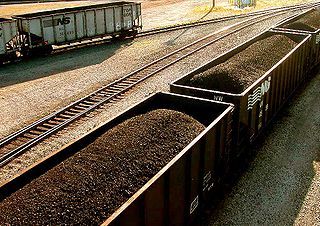Coal As a World Energy Source

It is my understanding that because of: (1) the cost of new coal plants due in part to EPA enforcement of air pollution standards, (2) the lower cost (in comparison to coal) of new (natural gas) NG plants and (3) the low cost of NG, new coal plants are not being built in the US. As old coal plants reach end of life and are phased out, these are being replaced with NG plants, wind and solar. The issue is almost entirely what will China and India do. I don’t think that the U.S. will have much influence on either; rather, their directions will be determined by domestic politics.
Yes, the U.S. is de facto phasing out coal, though it would be nice to see that articulated as a policy.
I wish that were the case in Asia as well, but it’s not. China, though it’s investing in renewables, is building a new coal-fired plant at the rate of one per week, importing coal feverishly from the U.S., Australia, and wherever else they can get it.
At one level I’m sure what you’re saying about Asia is correct, i.e., that its grid-mix is and will continue to be a matter of domestic politics. At another level, it’s incumbent upon all of us to take responsibility for a situation that will destroy all of us indiscriminately: the continued burning of hydrocarbons to provide energy for a population that will reach 10 billion by 2050. This is a problem that has no international borders.

It makes sense to replace some things before they quit working. Computers, light bulbs, water heaters and power plants of all kinds come to mind. At what point should a newer technology replace a functioning older technology? From a business perspective, it is logical to replace old equipment when it is less expensive to amortized the cost of the new T than to continue to pay to operate the old T.
The bugaboo that brings out political rants is the hidden costs of air pollution and other environmental degradation brought on by continued use or disposal of the old stuff. The compromise which is acceptable to many folks is to retrofit, upgrade, or renew older systems to mitigate at least some of the environmental consequences of continued use. Extension of the life cycle benefits the technology investors as well as the rate payers. Everyone wins if level heads prevail.
Craig, you have overlooked China’s plans for nuclear power. Here is part of an article I found on what China is doing:
“Mainland China has 14 nuclear power reactors in operation, more than 25 under construction, and more about to start construction soon.
“Additional reactors are planned, including some of the world’s most advanced, to give a five- or six-fold increase in nuclear capacity to at least 60 GWe by 2020, then 200 GWe by 2030, and 400 GWe by 2050.
“China is rapidly becoming self-sufficient in reactor design and construction, as well as other aspects of the fuel cycle.”
Here is a link to the article from which the above was taken:
http://www.world-nuclear.org/info/inf63.html
I also found an article which indicates that China is de-emphasizing wind and solar power.
According to additional information I have, China is actively doing development work on the liquid fluoride thorium reactor (LFTR), a reactor type that may replace our pressurized water uranium reactors.